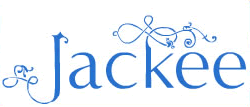Archive for November, 2012
Friday, November 23rd, 2012
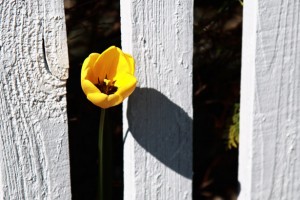
The Yellow Tulip
For weeks
it struggled
through the hard crust
of the spring earth
and a foot
of air
Just to be
scorched
by the sun
jolted
by raindrops
blasted
by the wind
But on this gentle
May morning
as it opens
yellow petals
to the sky
Nothing else matters
George Swede (1940 – Canadian psychologist, poet and children’s writer)
Poetic Inquiry
1. What lines speak to you from the poem?
2. Write about a time in your life or career where you were the Yellow Tulip.
3. What have you opened to recently in your life or career?
4. Take any line from the poem and use as a writing prompt for your writing practice
No Comments
Friday, November 23rd, 2012
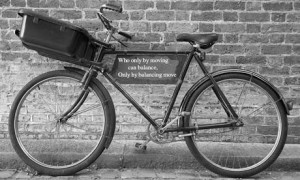 Photograph Winning Words www.winningwordspoetry.com
Photograph Winning Words www.winningwordspoetry.com
Every Friday to kick start your weekend we’ll post a poem on one or all three of the blogs.
There’s a poem for every ailment. We can write our own poems to distill our experiences or feelings or we can use the medicine and wisdom from other people’s poems to understand ourselves, and our worlds better. In the poetry world this technique is known as a poetry prescription. When I read other people’s poems they help me to better articulate and feel my emotions. I find myself in a relationship with the poet and a realization that I am not alone with what I experience on a day-to-day basis. Have you noticed how some poets find just the right words to describe particular events and life experiences from the large to the small?
More and more I’m noticing how poems stop me in my track. Causing me to pause and allow the words to sink in a more conscious and mindful manner. I like that about poetry. Reading poetry and engaging with a poem is an act of mindfulness, which brings health and emotional benefits to the reader.
Phyllis Klein and Perie Longo writing in an article, The Therapeutic Benefits of Poetry (2006) describes how a poem makes us feel safe because, “a poem has a border, a frame, or structure, as opposed to prose, the form itself is a safety net. Strong emotions will not run off the page.”
Lately I’ve been more courageous in writing poems of my own. When I do I am surprised by how accurately the poem both captures and mirrors my emotions and raw feelings.
Here at www.jackeeholder.com we’re experimenting with Poetic Inquiry. At the end of each poem you‘ll find a list of prompts should you wish to delve more deeply into the poem and explore its meaning and how the poem relates to you. When poetry therapists work with groups and individuals they’ll ask the group which lines resonate with them or what themes they’re drawn to. We hope the prompts offer you some of that exploration if you wish to reflect further. We’d love to know which poems speak to you or even post one of your poems as one of our Friday Poetry Prescription blogs.
No Comments
Friday, November 23rd, 2012
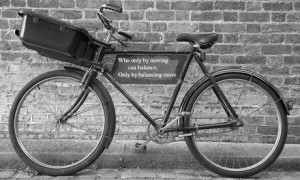 Photograph Winning Words www.winningwordspoetry.com
Photograph Winning Words www.winningwordspoetry.com
Every Friday to kick start your weekend we’ll post a poem on one or all three of the blogs.
There’s a poem for every ailment. We can write our own poems to distill our experiences or feelings or we can use the medicine and wisdom from other people’s poems to understand ourselves, and our worlds better. In the poetry world this technique is known as a poetry prescription. When I read other people’s poems they help me to better articulate and feel my emotions. I find myself in a relationship with the poet and a realization that I am not alone with what I experience on a day-to-day basis. Have you noticed how some poets find just the right words to describe particular events and life experiences from the large to the small?
More and more I’m noticing how poems stop me in my track. Causing me to pause and allow the words to sink in a more conscious and mindful manner. I like that about poetry. Reading poetry and engaging with a poem is an act of mindfulness, which brings health and emotional benefits to the reader.
Phyllis Klein and Perie Longo writing in an article, The Therapeutic Benefits of Poetry (2006) describes how a poem makes us feel safe because, “a poem has a border, a frame, or structure, as opposed to prose, the form itself is a safety net. Strong emotions will not run off the page.”
Lately I’ve been more courageous in writing poems of my own. When I do I am surprised by how accurately the poem both captures and mirrors my emotions and raw feelings.
Here at www.jackeeholder.com we’re experimenting with Poetic Inquiry. At the end of each poem you‘ll find a list of prompts should you wish to delve more deeply into the poem and explore its meaning and how the poem relates to you. When poetry therapists work with groups and individuals they’ll ask the group which lines resonate with them or what themes they’re drawn to. We hope the prompts offer you some of that exploration if you wish to reflect further. We’d love to know which poems speak to you or even post one of your poems as one of our Friday Poetry Prescription blogs.
No Comments
Friday, November 23rd, 2012
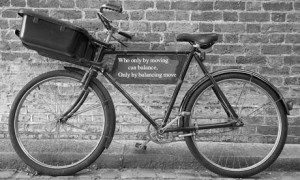 Photograph WinningWords www.winningwordspoetry.com
Photograph WinningWords www.winningwordspoetry.com
Every Friday to kick start your weekend we’ll post a poem on one or all three of the blogs.
There’s a poem for every ailment. We can write our own poems to distill our experiences or feelings or we can use the medicine and wisdom from other people’s poems to understand ourselves, and our worlds better. In the poetry world this technique is known as a poetry prescription. When I read other people’s poems they help me to better articulate and feel my emotions. I find myself in a relationship with the poet and a realization that I am not alone with what I experience on a day-to-day basis. Have you noticed how some poets find just the right words to describe particular events and life experiences from the large to the small?
More and more I’m noticing how poems stop me in my track. Causing me to pause and allow the words to sink in a more conscious and mindful manner. I like that about poetry. Reading poetry and engaging with a poem is an act of mindfulness, which brings health and emotional benefits to the reader.
Phyllis Klein and Perie Longo writing in an article, The Therapeutic Benefits of Poetry (2006) describes how a poem makes us feel safe because, “a poem has a border, a frame, or structure, as opposed to prose, the form itself is a safety net. Strong emotions will not run off the page.”
Lately I’ve been more courageous in writing poems of my own. When I do I am surprised by how accurately the poem both captures and mirrors my emotions and raw feelings.
Here at www.jackeeholder.com we’re experimenting with Poetic Inquiry. At the end of each poem you‘ll find a list of prompts should you wish to delve more deeply into the poem and explore its meaning and how the poem relates to you. When poetry therapists work with groups and individuals they’ll ask the group which lines resonate with them or what themes they’re drawn to. We hope the prompts offer you some of that exploration if you wish to reflect further. We’d love to know which poems speak to you or even post one of your poems as one of our Friday Poetry Prescription blogs.
No Comments
Thursday, November 22nd, 2012

Recently I completed coaching with a client whom I have worked with for over three years. Our journey together has been a rich and deep inquiry into his leadership and personal strengths. We covered much ground and I watched as he inhabited more of his ground to stand on, spoke in his own voice and became confident and sure about sharing his own thoughts. I noticed the joy and energy I always felt when I knew it was time to get ready for a coaching session with this client and reflected frequently in my notes how our journeys mirrored each other and how sometimes I would go away with an inquiry of my own. Coaching is a two way process. Both coach and coachee should be in a learning environment.
Our ending took place over three or more sessions as we began the process of wrapping up our work together. This felt right, to consciously declare the learning and growth that had taken place over the course of the three years and not bottle it up in one single session. We gave time to honour the width and breath of the journey acknowledging the skills that had become a part of their personality, recognising the challenges that had been overcome. I found with this particular client that my skills as a listener always formed an important part of our work together. In fact when I reflected on each of our sessions this is what I appeared to do well, really well and was a quality my client always fed back to me.
There were times when I questioned the value of my listening. Was this really enough in my work as a coach and mentor. Was my presence, my ability to be there, fully present and open, not trying to fix, was that enough? Of course the question was more for me than for my client. For underneath the question was the fundamental search many coaches ask of themselves – “Am I enough?” It is a question that never leaves me. It is what keeps me alive in the coaching relationship which for me is as much about my evolution and growth as it is about the other. One of my wise Supervision tutors, Miriam Orriss on my Supervision training programme would say, “Who you are is how you coach.” Funny that because as my personal tutor during my time on the programme I felt enormously seen and held by her in a way that was not motherly, in fact many times challenging but with great humility and compassion. I still feel some of the actual sensations in my bones from some of the shifts I made in my work with her. But at the centre, at the core of our supervision was the fact that I felt a deep compassion and respect coming from her that grounded our work profoundly.
So I guess what I am finding is that listening is more than sitting there, ears twitching, listening out for the music behind the words. It has layers and layers of qualities that we bring that allow our clients to be held and seen. Every time I work with an individual we have an opportunity to share these great gifts with each other.
I maybe rambling a bit now, a signal that it is time to wrap up this post. What I thought I was going to write about, endings in this post was not really where I ended up. A pattern often reflected in many of the coaching conversations I have during my week. I often remind coaches in training that the presenting issue is not always the main issue. I am learning that this is also true for the writing process as well. A reminder that the writing when we relax and trust will take you were it is meant to go to the heart of what matters, what is meaningful to you.
No Comments
Thursday, November 22nd, 2012
On one of my recent walks to my local Sainsbury’s I decided to set myself a creative challenge of taking photos of as many trees with red leaves. This quickly turned into a photo assignment of snapping almost any object I passed with the colour red. Within 30 minutes I had at least five juicy images on my camera phone that I quickly turned into visual writing prompts.
Visual Writing Prompts are great to use when you need to warm up on the page before you get into your actual writing. Use them to fire up your creative and professional work. Getting into your imagination and accessing your theta thinking state can be useful stimulation for both creative and professional writing projects. You can do the same to create story lines for your characters for novels and short stories. Observe the visual image, ask a question related to your character and get writing. I’ve shared some ideas of how to turn an image into a prompt underneath each of the images I collected on my walks. And of course please feel free to make up your own.
I’ll share new visual writing prompts over the next few weeks.

Write a description of the person who rides this scooter
If you were loaned this scooter for a week and it could take you anywhere, where would you ride it to?
Put one of your characters from your novel or short story on this scooter and take them on a journey.

Write about the last telephone call you made from a Red Telephone kiosk?
Tell the story of a telephone call you will never forget?
Describe in as much detail as you can the person who last made a call from this box? How old were they? Who did they call? How much money did they place in the pay phone? What was the last sentence uttered before they said, ‘goodbye’?
Write about why this telephone box has been left standing in this location
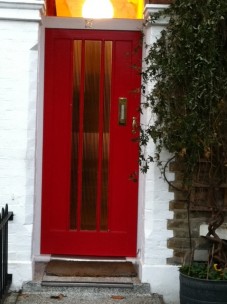
Write about someone who lives here?
How is their personality or characteristics like or unlike the colour of the door?
Who chose the colour for this door and what was the reason for their choice.
Write about an entrance.
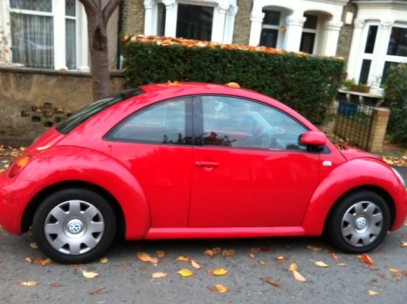
Write a poem or a short children’s story entitled the Red Beetle
Use the car as a narrator of a short story or poem
Put one of the characters in your novel behind the driving wheel and have them talk from this place

Hope and Greenwood is a sweetshop in East Dulwich where I live selling sweets from the 1960’s and 1970’s era
Write a personal essay or poem told through the memory of the sweets you enjoyed as a child growing up.
Write a story to accompany the scene in the shop window
Imagine this was 1965. Write a scene describing the people inside the shop on any given day in 1965.
No Comments
Wednesday, November 21st, 2012

Last year on my way to visit a friend ill in hospital I walked past the two statues in the above image. I was anxious about my visit but seeing the two statues caused me to stop and slow down. I was really taken in by so much of the installation that a few minutes went by without me even noticing how long I had stood there or the stream of people who passed me by. . In that moment I slowed right down and got lost in the moment. I became more present in my body and entered the hospital in a more relaxed and resourceful state to spend time with my friend.
I had a similar feeling last week on my way to a funeral. Walking along Dalston High Street in London at lunch time with busy traffic and pedestrians I glimpsed an artist at work across the street painting what looked like a watercolour. Again the scene caused me to stop and slow right down. He had leaned his easel up against a lamp post closest to the road side and despite the busy traffic roaring by he appeared fully immersed in his painting. I wanted to be him. I wanted to be the painting. He was what psychologist Mihaly Csikszentmihalyi describes as being in his flow. When was the last time you lost track of time and found yourself engrossed in an activity that was going against the speed of everyone else around you? It can be a challenge to be the odd one out. To go at a different speed than everyone else is moving at.
Sometimes when I’m travelling in early morning London rush hour traffic I notice that when I move at a slower speed to those around me people tend to barge past me or literally move me out of the way. It can be hard to find our own rhythm and speed when the rest of the world is going so fast. When was the last time you lost track of time because of your absorption in an activity? Slow is good. Fast doesn’t always mean better. How many people walked past those statues everyday and never give them a second thought? I hate to think how much we miss in our crusade for speed and getting there quick.
Really pausing and taking in these two images allowed me to connect with the strength and resilience I felt when observing the pieces. I was able to take those qualities with me when I finally entered the hospital to spend time with my friend.
You can use images around you as writing prompts and ideas for your creativity. that’s why I love having a camera on my phone so I can capture images and scenes and then store them for later inspiration. Taking out the image today has reminded me of my friend and how much strength she showed in the final months of her time with us. It was a strength made up of so many different qualities and elements. The image is a timely reminder, a visual signpost for me to begin to piece together some of the painful feelings I still feel around her death and her leaving us at what felt like so prematurely.
Todays image as a visual writing prompt t entice you onto the page. All you have to do is to free write for 10 minutes whatever thoughts or feelings come to you from exploring the image and responding to the following prompts? You don’t have to stick with the prompts. Just write what comes.
When you look at the image how does it make you feel?
What or who does it remind you of?
Who are the two people holding hands?
What story or memory does the image evoke?
No Comments
Wednesday, November 21st, 2012
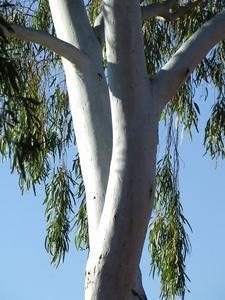
How many times have we walked past a tree and not really taken the tree in? I am flanked on both sides by two Eucalyptus trees in the neighbouring gardens to my left and my right which if I’m honest I’ve paid very little attention to.
A chance remark by a guest who was delighted to see the trees, which can’t be missed from our patio called me to pay more attention to this beautiful tree. For my guest it evoked memories of home to see the trees, which are native to their place of birth in Australia. I was a bit disappointed that I hadn’t paid much attention to either of these trees, which tower above the other trees in the area.When I really discovered the tree she was in full blossom. A blossom easily, camouflaged by the faint pale white colour of the flowers that remained almost hidden amongst the mint coloured green leaves.
Normally I flirt with trees with thick, solid trunks and who are likely to have been alive for over a hundred years. The Eucalyptus tree, slim and yielding with a charcoal grey bark seems young and sober in comparison and less inviting that the types of trees I am normally captivated by.But from the moment of the Eucalyptus’s identity I began imagining Koala bears clambering up her trunk with babies on their back. Once a year the bark is shed in huge slabs and displays new colours, ranging from pale cream to light orange. Once the new bark is worn in the colour fades to a light grey, and then weathers a little more until the medium grey is back for the rest of the year. There’s always more to the trees we look at on a regular basis.
Most days the Eucalyptus is the first tree my eyes fall on when I sit down at my desk and turn to look outside my office window. I can tell the weather by the shape and formation one of these trees makes as it bows to the force of the wind or whether she is standing tall and straight indicating that this will be a day of little wind, but will be calm. I love the way the leaves of the tree shakes and shimmering in the breeze looking like fists waving energetic hellos.
I never tire looking at the Eucalyptus tree now and am glad that I have really connected with her.
No Comments
Wednesday, November 21st, 2012
No Comments
Wednesday, November 21st, 2012
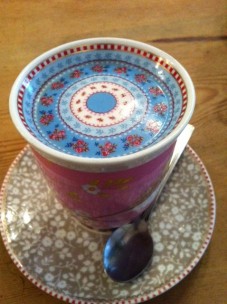
Where do you pause for 5 minutes or more in your day? Research shows that multi tasking is no longer the most effective way of being productive. Robert Holden author of the book Success Intelligence believes that, “Leaders are not just paid to be busy. They are paid to think.” Really? What do you think about Holden’s statement? How high is thinking and reflective on your day to day agenda?
Reflective practice is a requirement of all great coaches and requires a real commitment to engaging with reflective practice actively. Executive Coaches and psychologists Maria Gilbert and Michael Carroll describe the actual word reflection as, “coming from a Latin root meaning to bend back, to stand apart from, to stand outside of”. Reflection helps us to gain new perspectives on what we have done.
Consider the last time you took a lunch break? or the last time you scheduled time in your diary to sit or walk with the conscious intention to do some actual thinking about a project. Or perhaps just having the space to not think and give your mind time to rest is what is most needed.
There’s a reason why tea and lunch breaks were built into the working day. The brain needs downtime especially in this time of information overload. Last year I had a mini relapse following a friends death and started smoking after twenty years of being a non- smoker. Even though I knew it wasn’t good for me the thing I most enjoyed about smoking was the thinking space going outside for a cigarette gave me. I used to joke with my friends that smoking is the way some people meditate. Think about it, take away the cigar or cigarette and what we have are two similar activities involving a conscious inhale and exhale of the breath.
Thankfully I was able to drop the habit very soon after I started but I’ve noticed just how much more thinking and qualitative time I now give myself during my day. Sometimes when working from home I catch my partner looking at me as if to say how comes you’re not sitting at your desk looking overwhelmed and stressed out. At the same time I know from my work as a coach how difficult it can be in organisations to stand your ground, to consciously pause, to relax at your desk and to do the unthinkable and take a break. But consider how can you not afford to.
Whether it’s going off for a cup of tea, taking a 10 minute walk outside or listening to a soothing piece of music on your ipod or iphone there are plenty of ways you can creatively build pause into your day. On our coach training programmes we encourage our coaches to develop space before and after all coaching or mentoring sessions. Coaches are given guidance about how to prepare for the session and how to download and enter into a restorative space after the session. Pausing, taking a few deep breaths, taking a few stretches or writing in their reflective journals are some of the small ways coaches are building pause into their practice.
We emphasise how important taking care of the self is to their success and meaning as coaches. the same applies to all individuals and leaders in organisation. Pausing is a way of filling ourselves back up, restoring our energy and creating that priceless resource of thinking time which so easily connects us to the wonders of the creative and imaginative mind.
Consider how you will create more pauses in your day and what benefit this will give to you, your work or coaching clients and your organisation.
No Comments
